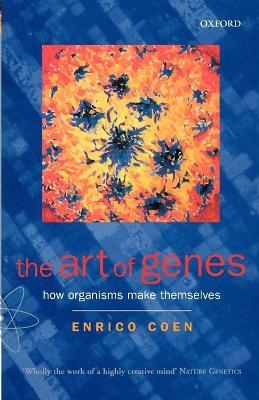
The Art of Genes
How Organisms Make Themselves
Seiten
2000
Oxford University Press (Verlag)
978-0-19-286208-2 (ISBN)
Oxford University Press (Verlag)
978-0-19-286208-2 (ISBN)
How is a tiny fertilised egg able to turn itself into a human being? How can an acorn transform itself into an oak tree? This work gives an account of these findings, and of their significance for how we view ourselves. Through a synthesis of science and art, it describes the revolution in our understanding of how plants and animals develop.
'Coen's book is spiced with historic quotations and examples of plants' and animals' intriguing behaviour contains a wealth of interesting material Coen communicates his immense learning with a hundred appealing tales'
Max Perutz
How is a tiny fertilised egg able to turn itself into a human being? How can an acorn transform itself into an oak tree? Over the past twenty years there has been a revolution in biology. For the first time we have begun to understand how organisms make themselves. The Art of Genes gives an account of these new and exciting findings, and of their broader significance for how we view ourselves.
Through a highly original synthesis of science and art, Enrico Coen vividly describes this revolution in our understanding of how plants and animals develop. Drawing on a wide range of examples–from flowers growing petals instead of sex organs, and flies that develop an extra pair of wings, to works of art by Leonardo and Magritte–he explains in lively, accessible prose the language and meaning of genes.
'I would have loved this book at 16, and so should anyone–aged 16 to 60–who really wants to understand development.'
John Maynard Smith, Nature
'Coen's book is spiced with historic quotations and examples of plants' and animals' intriguing behaviour contains a wealth of interesting material Coen communicates his immense learning with a hundred appealing tales'
Max Perutz
How is a tiny fertilised egg able to turn itself into a human being? How can an acorn transform itself into an oak tree? Over the past twenty years there has been a revolution in biology. For the first time we have begun to understand how organisms make themselves. The Art of Genes gives an account of these new and exciting findings, and of their broader significance for how we view ourselves.
Through a highly original synthesis of science and art, Enrico Coen vividly describes this revolution in our understanding of how plants and animals develop. Drawing on a wide range of examples–from flowers growing petals instead of sex organs, and flies that develop an extra pair of wings, to works of art by Leonardo and Magritte–he explains in lively, accessible prose the language and meaning of genes.
'I would have loved this book at 16, and so should anyone–aged 16 to 60–who really wants to understand development.'
John Maynard Smith, Nature
Research Scientist in Genetics Department, John Innes Centre, Norwich. Made honorary Professor in Biology at University of East Anglia, 1997. Fellow of Royal Society (1998), Fellow of Linnean Society (1997). Awards: Science for Art Prize; EMBO Medal (1996), Linnean Gold Medal (1997).
| Erscheint lt. Verlag | 16.3.2000 |
|---|---|
| Reihe/Serie | Oxford Paperbacks |
| Zusatzinfo | 24 halftones, numerous line drawings |
| Verlagsort | Oxford |
| Sprache | englisch |
| Maße | 127 x 197 mm |
| Gewicht | 279 g |
| Themenwelt | Sachbuch/Ratgeber ► Natur / Technik |
| Informatik ► Weitere Themen ► Bioinformatik | |
| Naturwissenschaften ► Biologie ► Genetik / Molekularbiologie | |
| ISBN-10 | 0-19-286208-1 / 0192862081 |
| ISBN-13 | 978-0-19-286208-2 / 9780192862082 |
| Zustand | Neuware |
| Haben Sie eine Frage zum Produkt? |
Mehr entdecken
aus dem Bereich
aus dem Bereich
Grundlagen, Algorithmen, Anwendungen
Buch | Hardcover (2022)
Wiley-VCH (Verlag)
79,90 €
Nicht nur ein Ratgeber zum effektiven Computereinsatz
Buch | Softcover (2021)
Lehmanns Media (Verlag)
14,95 €


